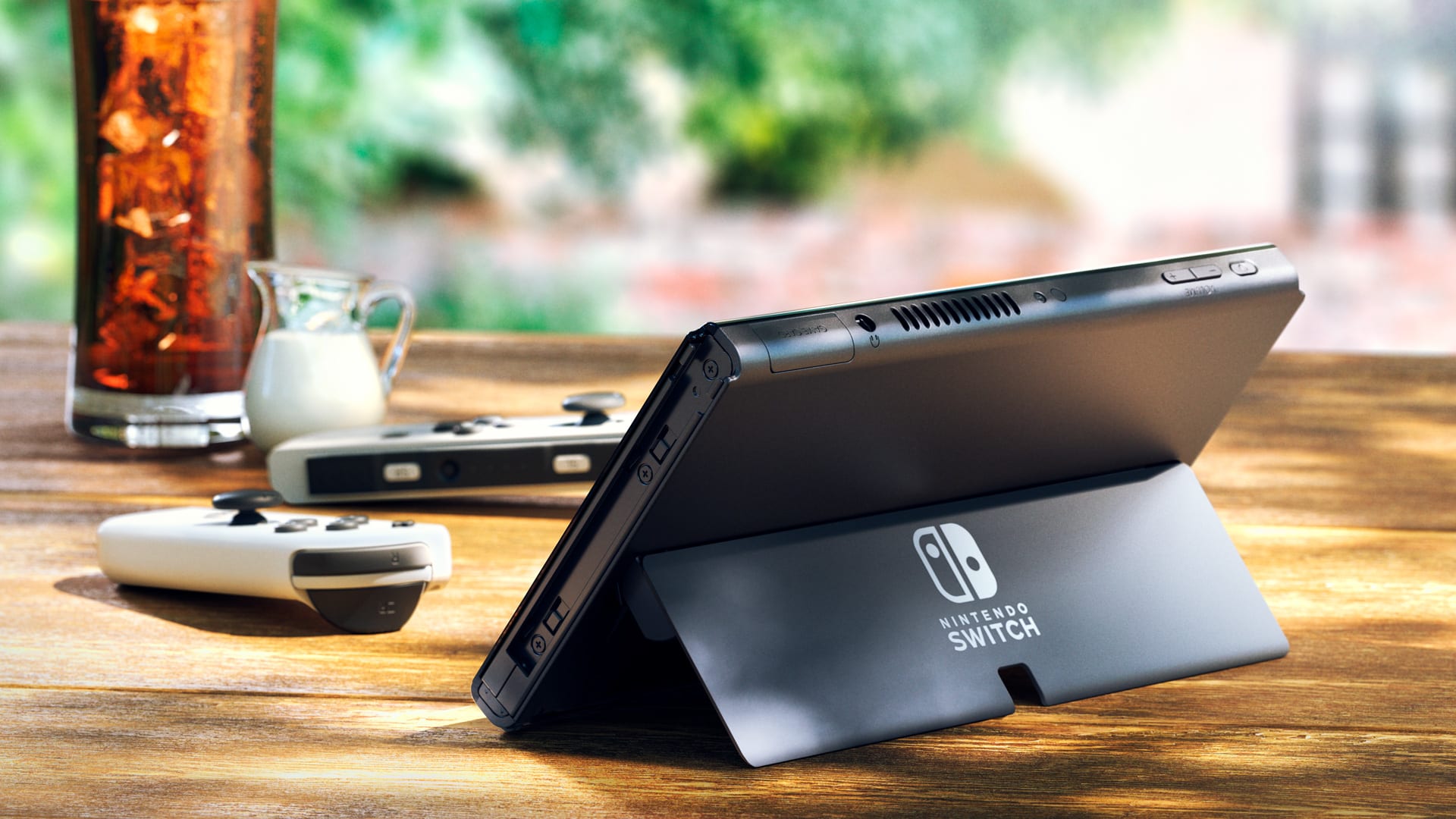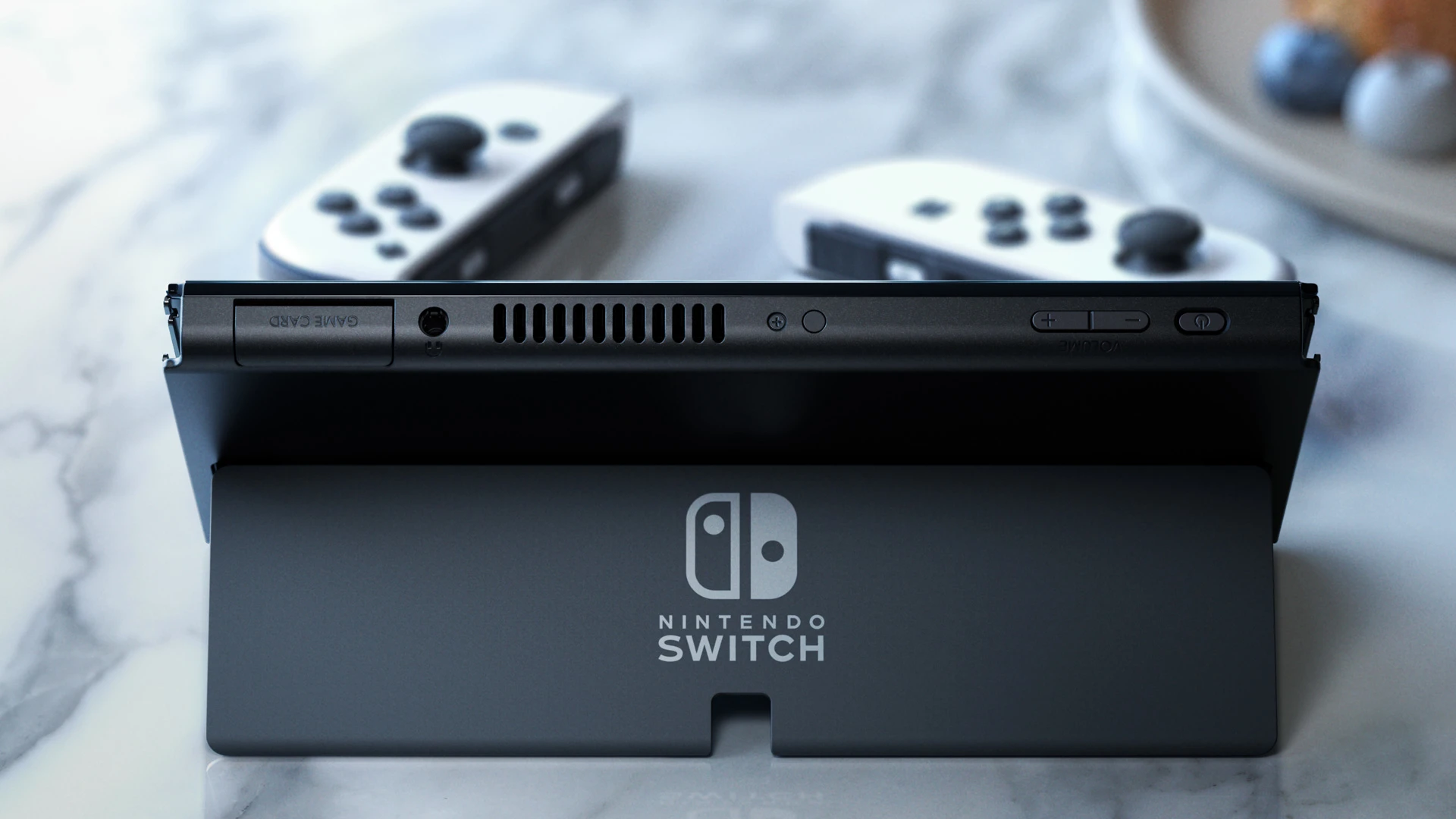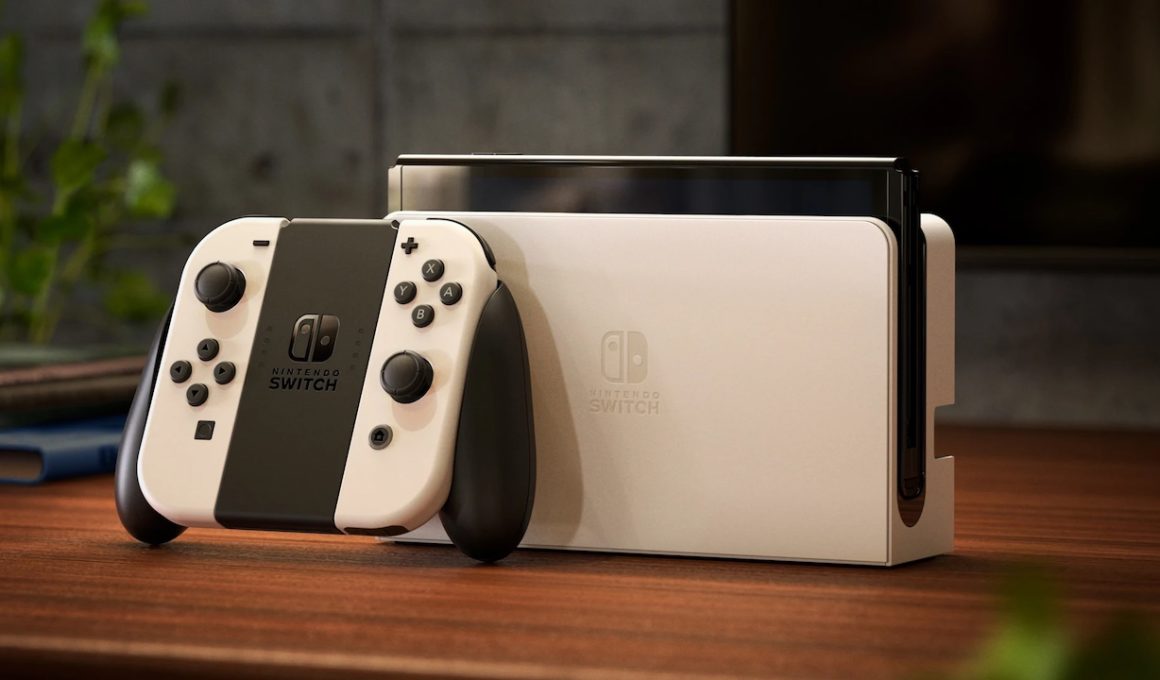It’s always exciting when new hardware gets released whether it’s a new generation of consoles or like in this case, an update for the existing one. And while the Nintendo Switch OLED Model might not be the power-driven ‘Nintendo Switch Pro’ upgrade that many were rumoured to believe was coming soon, it is still an excellent bit of kit and a decent improvement over the original device. There is one catch with that statement however which we’ll get to later.
A Nintendo Switch OLED Model will set you back £309.99, £50 more than the recently reduced price of a regular Nintendo Switch. So what is it exactly that you’re getting for that extra cash?

The Nintendo Switch OLED Model comes in two flavours. While the console itself remains the same shade of black as the original (albeit this time with a gloss finish around the screen rather than the matte finish) the Joy-Con come in the familiar red and blue combo along with the far more alluring white Joy-Con. Opting for the latter even includes a white dock, a rather fetching look and one that I honestly prefer to the darker original.
The size of the screen is increased from the original 6.2” to 7” and while that might not sound like much, when you sit down and start playing with the Nintendo Switch OLED Model, you’d be surprised how much you do notice that extra 0.8”. Much like you would see with smartphone upgrades over the years, rather than increasing the size of the device itself, the screen instead creeps closer to the edge leaving less border and giving the Switch OLED a sleeker, sexier appearance.
Moving from an LCD to OLED screen also brings with it easily the biggest improvement and that’s in how games now look. Testing out the likes of the new Metroid Dread along with a handful of other older titles, the visuals and colours truly pop off the screen, made all the more impressive when compared with the original console’s display. It’s hard to deny the improvement even in the random handful of titles I tried like Kirby Star Allies and New Pokémon Snap and I can’t wait to check out how it impacts more.

The kickstand – a feature much criticised when it came to the original Nintendo Switch design for its flimsy and awkward build – is much improved, the stand itself now running across the entire length of the device. Better still than the sturdier feel, is the wider flexibility you have when it comes to angling the portable home console so no more using items to get the perfect position when travelling in awkward spaces.
The internal storage has also seen an upgrade, doubling from 32GB to 64GB. It’s an increase in memory sure, but still a rather meagre one. Just like the original Nintendo Switch, players are likely to exhaust the space of the OLED promptly where a Micro SD will then offer a solution in much larger capacities. It’s disappointing the internal storage still hasn’t quite reached triple figures especially given how big certain games can be to download.
In terms of battery life, it definitely feels in line with what you currently get from a standard Nintendo Switch. Another thing to note is the addition of a wired LAN port on the dock which means those that want to connect directly via an Ethernet port no longer need to purchase an adaptor.

Now if you’re sitting there and thinking that this all sounds great… for those that play in handheld mode, you’re not entirely wrong. With nothing in the way of a boost in terms of performance over the base console, the Nintendo Switch OLED Model feels more suited for those that regularly take advantage of playing games in handheld mode. Sure, it might offer a LAN port and larger storage space but these aren’t exactly what you’d call headlining features. So who is the Nintendo Switch OLED Model for?
If you’re coming to the Nintendo Switch scene fresh then the Nintendo Switch OLED Model definitely feels like the obvious choice. For the OLED screen alone, it’s well worth shell out that extra £50. Seriously I never want to go back to my old screen! Those that have had their console since day one and tend to make use of its handheld capabilities might want to consider the upgrade too. It has been over four years after all. The group that perhaps might best skip the Nintendo Switch OLED Model are those that have little to no interest in playing their games on the go. If you prefer to sit on the sofa in front of a large TV then Nintendo’s latest revision has little new to offer that experience.
All in all, though, the Nintendo Switch OLED Model is a great improvement over the original console whose changes truly shine when getting hands-on for yourself. While those whose gaming habits tend to lie in the system’s docked mode won’t really benefit from the Nintendo Switch OLED Model’s features, those who enjoy sitting back and relaxing with some handheld gaming might want to consider the upgrade.
Review unit provided by Nintendo





